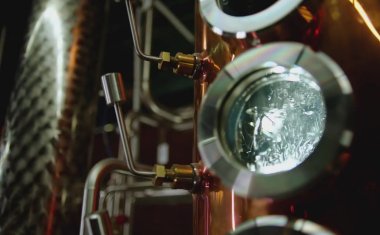Energy Efficiency
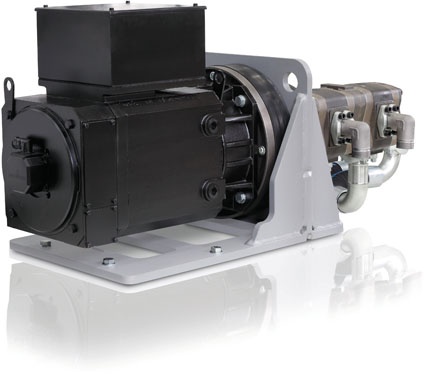
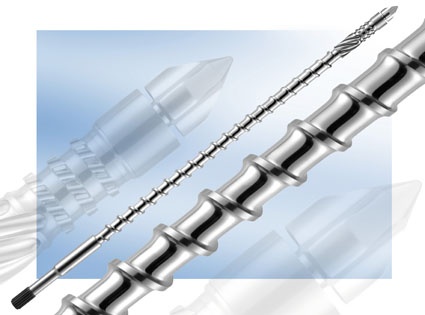
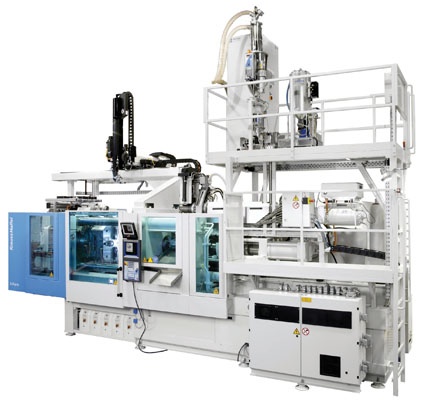
For a long time energy loss during production was accepted as inevitable. Dramatically rising energy costs as well as an increased awareness of environmental issues have resulted in a rethinking, which is delivering practical and effective innovations. KraussMaffei has bundled all of its energy-efficiency options in its BluePower concept - a range of measures for reducing consumption of energy and other resources in plastics processing. Furthermore, technology fusions and multitechnology processes - which are an area in which KraussMaffei has unique expertise - offer not only technical benefits, but also huge potential for energy and cost savings.
In many areas the use of plastics has contributed to a reduction of CO2 emissions. But it is impossible to ignore energy consumption during production of plastic parts or semi-finished products. Energy loss in production processes that are associated with changes in the material state were considered inevitable for a long time.
Optimizing Energy Consumption in Injection Molding
KraussMaffei Technologies has been systematically working on improving energy efficiency and cost competitiveness in plastics manufacturing. The company's BluePower concept is a comprehensive, modular package of energy-saving measures that are available separtely or in combination as customized solutions both for new machines and systems and for retrofitting on already installed machines.
In order to achieve long-term reductions in energy consumption for injection molding machines, KraussMaffei experts focused on three main areas - the drive systems, the energy balance and optimizing production processes.
Drive Systems
For hydraulic or hybrid-drive injection molding machines, BluePower offers servo drive technology that makes the most out of the potential for energy savings. The finely-coordinated drive system, comprising a high-efficiency, synchronous servo motor and a hydraulic pump, not only boosts overall efficiency, but also reduces idling losses almost to zero. Depending on the application, servo pumps save up to 60% of the input power in hydraulic machines. In terms of total energy consumption this amounts to savings of approx. 40%.
„Inner values" also contribute to improved energy efficiency during production, for instance the HPS-M universal mixing screw. The HPS-M guarantees outstanding plasticizing performance, resulting in excellent melt homogeneity. Thanks to design improvements fast color changes are also possible. If the screw is used, for direct coloring of PE, compounding can be dispensed with. This delivers an average energy saving of 0.18 kWh/kg resulting in cost savings of more then 30,000 € a year. The HPS-M screw and direct coloring will reduce energy costs by over 30%. The screw also requires less masterbatch. Moreover, it's special geometry allows operation at a lower melt temperature. Cooling times can be shortened and the amount of cooling capacity that has to be provided can also be reduced.
In extrusion technology, too, some screws have been optimized for specific functions. These screws introduce only as much energy into the melt as is required for high-quality processing. Benefits: the shear stress on the plastic, like the energy consumption of the screw drive, is lower and there is no need to remove „redundantly introduced" energy in the downstream cooling zone.
Analyzing Energy and Performance Data
Logging production data for each shot is a familiar and routinely used tool in quality assurance. Less common, by contrast, is continuous, real-time energy and performance data acquisition using an energy analysis tool. The EAT (Energy Analysis Tool) collects data on the specific energy requirements of a number of machine functions, the data are displayed on the machine's operator panel. The effect of changed machine settings on energy consumption is thus immediately obvious. Moreover, the system offers a means of capturing the energy consumption of peripheral units online. Incidentally, "need-driven temperature control" is one topic in a research project that KraussMaffei is working on together with partners from industry and science.
The EAT enables processors to collect and analyze data on the power consumption of a KraussMaffei injection molding machine in order to determine the most energy-efficient machine settings. Energy consumption data are logged together with other parameters during the production process and can also be used for cost calculations.
Minimizing Energy Loss for Plasticizing Units
Generating heat and subsequently cooling accounts for a large amount of the energy consumption in plastics processing. Radiation heat loss from the plasticizing unit is comparatively easy to prevent by fully insulating the screw barrel with insulating sleeves. In an ideal case the heating wattage can be reduced by 20 to 40%.
An analog solution is also available for extrusion. Here KraussMaffei offers a retrofit kit consisting of insulating sleeves and convection flap systems. It is possible to save up to 10% of total power consumption in this way, depending on the operating settings of an extruder.
Process Optimization through Process Integration
Looking beyond the optimization of existing production systems, KraussMaffei uses its technology-spanning know-how to develop integrated production processes that integrate different technologies. With its special expertise as a manufacturer of machines and systems for injection molding, extrusion and reaction technology, KraussMaffei takes a holistic approach, with the planned product and its functions as the starting point. The company's goal is to develop sustainable production solutions aligned to the major technology trends in plastics engineering. To this end, KraussMaffei has linked its in-house development resources with those of research institutes and industrial partners in the interdisciplinary PRIMUS Network for Innovation. PRIMUS stands for Process Integrated Machinery for Unique Solutions.
Multiprocess solutions, which merge separate processes into a single process sequence, are gaining importance in both production and peripherals. In plastics processing, it is both expedient and energy-efficient to heat the material once only. This in-line solution shortens cycle times and avoids repeated heating and plasticizing of materials. The effort and cost of the extra handling, intermediate storage and possibly intermediate cleaning of products can be eliminated. Here are some examples:
- IMC - Injection Molding Compounder
- The IMC process combines continuous extrusion with discontinuous injection molding.
- CoverForm
- The CoverForm process combines reaction technology with injection molding to apply a scratch-resistant protective coating in the mold.
- SkinForm
- The SkinForm process combines injection molding and polyurethane processing.
- C.A.S.E.
- C.A.S.E. stands for Coatings, Adhesives, Sealants and Elastomers. KraussMaffei has developed high-pressure metering technology for the often small volumes typical of these applications.
Environmental Compliance has Many Benefits
Running an energy-efficient and thus more environmentally compliant operation is increasingly a basic condition for generating orders. In consequence, all future projects directed at energy-efficiency will need to consider the entire value-adding chain, from raw material production to the finished product. Technology fusions and multi-process solutions - which are often called single-stage processes - are one of KraussMaffei's areas of special expertise. They have the potential for huge efficiency gains. Besides the reduced logistics effort, the combination of injection molding, extrusion and reaction technologies with application-specific automation can generate great advances in production efficiency and cost control.
Company
Krauss-Maffei Kunststofftechnik GmbHKrauss-Maffei-Str. 2
80997 München
Germany
most read

US Tariffs Fatal for European Pharma
Trump's tariff policy is a considerable burden and a break with previous practice.

ECA Foundation Aims to Become Largest Pharma Association for GMP/GDP Compliance
The ECA Foundation, one of the most important not-for-profit organizations for regulatory expertise in the pharmaceutical industry, aims to become the largest independent GMP/GDP organization in the world.
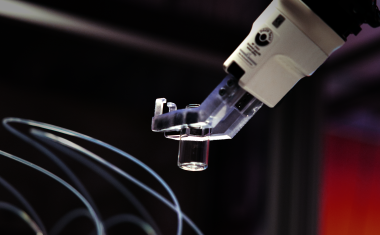
Lead or Lag: Europe’s AI Materials Race
How AI and Robotics are reshaping the race for materials discovery.

Relocation of Chemicals Production Footprint in Full Swing
A new Horváth study based on interviews with CxOs of Europe’s top chemical corporations reveals: The majority of board members expects no or only weak growth for the current year.

ISPE Good Practice Guide: Validation 4.0
The Validation 4.0 Guide provides a comprehensive approach to ensuring product quality and patient safety throughout a pharmaceutical product's lifecycle.

